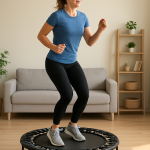Choosing the best camping portable power station might improve your outdoor experience. With a continuous power source, you can charge your devices, run lights, and power critical equipment without fear of running out of power. With so many models available, it may be tough to find the right one. This lesson discusses power station characteristics and how to calculate the appropriate size for your camping needs. Understanding these characteristics allows you to pick the best option for starting your future trip.
Key Features to Consider When Choosing a Power Station for Camping
Battery Capacity and Run Time
Battery capacity has a direct influence on how long your power station can supply electricity while camping. A bigger capacity, measured in watt-hours (Wh), indicates that the power station can provide energy for a longer length of time, which is critical for multi-day travels or powering larger items. The power station’s run time is how long it can work before needing to be recharged. Consider the energy requirements of any gadgets you want to use, such as lights, a cooler, or a phone. A bigger battery offers greater versatility but also adds weight, so striking a balance between capacity and mobility is essential.
Portability and Size
Size and portability are important considerations when choosing a portable power station, particularly for camping. A lightweight, small model guarantees effortless carrying without taking up excessive room in your equipment. But it’s crucial to strike a balance between mobility and the necessary power capacity. Although they are more portable, smaller power plants can not have enough energy to run several devices. Conversely, larger units might be heavy and bulky but offer more capacity. When choosing the right size, consider your camping setup, the length of your journey, and the weight you are prepared to carry.

Charging Speed and Input Options
Charging speed and input options are vital considerations when choosing a portable power station. Fast-charging technology guarantees that your gadgets charge rapidly, which is particularly useful when you’re in a rush. Look for models with numerous charging connections, such as USB, AC outlets, and carports, to enable compatibility with a wide range of devices. Furthermore, having the ability to charge the power station itself using solar panels, a vehicle, or a wall outlet is convenient. The more input possibilities provided, the more adaptable the power station will be to various charging conditions when camping.
What Size Power Station Do You Need for Camping?
Factors Affecting Power Consumption While Camping
Several factors influence power usage when camping, including the equipment you use, its wattage, and how long it operates per day. Appliances such as lights, portable coolers, and radios use different amounts of electricity depending on their size and efficiency. For example, a little LED light consumes far less electricity than a mini-fridge. Furthermore, the frequency and duration of use affect overall power demand. To estimate your overall energy use, consider how frequently you’ll need to charge or power your gadgets, and then select a power station with adequate capacity to meet your requirements.
Calculating Your Power Needs for Specific Devices
Checking the wattage of each gadget you want to use is the first step in determining your power requirements. To calculate the device’s total energy usage in watt-hours (Wh), multiply the wattage by the number of hours you plan to use it. For instance, 120Wh of electricity is used if a phone charger requires 30W and is charged for four hours. Total the watt-hours of all the equipment you intend to use, including minor appliances, fans, and lights. This sum will help you choose a power plant that can meet your demands without going out of commission too soon.
Choosing the Right Wattage for Your Trip
Both your power requirements and the length of your stay should be taken into account when choosing the appropriate wattage for your camping trip. A lower-wattage power station can be adequate if you simply need to charge a small number of gadgets. Choose a higher-wattage model, nevertheless, if you want to power bigger devices like a chiller or CPAP machine or if you are going on a multi-day journey. In order to prevent overloading the power station, the wattage should also include a little buffer in addition to the total watt-hours of all of your gadgets. To ensure dependability, it is generally advised to choose a power plant that is 20–30% more watts than your total use.
Conclusion
Choosing the finest portable power station for camping guarantees that you remain connected and energized during your journey. You may choose a power station that will keep your gadgets functioning smoothly by taking into account elements such as battery capacity, portability, charging speed, and the appropriate size. Calculating your energy requirements and selecting the appropriate wattage depending on the gadgets you’ll be using guarantees that you have enough electricity to enjoy your camping trip without fear of running out of power. With the correct power station, you can enjoy the outdoors while being charged and prepared for any adventure.







